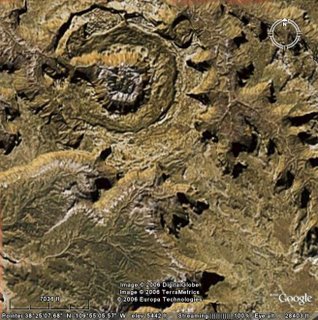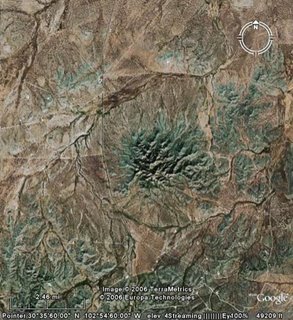 |
| Spring, 1957: How will you venture into the cosmos? |
Don't forget to read our previous post about BARIS!
 |
| Spring, 1957: How will you venture into the cosmos? |
 In particular, we found that the Vasari were vastly more powerful than either the TEC or the Advent. To test this theory, we played one game with only Vasari factions, figuring this would put us all on the same level playing field. We found that we did better this way, and our ships would occasionally survive a battle (as the TEC and Advent, our ships had an annoying tendency to explode after only a few seconds in combat). However, we were still completely unable to match the fleet production of the AI teams, and for hours we watched them produce 1 ship every 30 seconds, forming huge fleets of hundreds of ships. It’s possible that our game was so unbalanced because the Pirates were disabled; however, the game should be able to compensate for this.
In particular, we found that the Vasari were vastly more powerful than either the TEC or the Advent. To test this theory, we played one game with only Vasari factions, figuring this would put us all on the same level playing field. We found that we did better this way, and our ships would occasionally survive a battle (as the TEC and Advent, our ships had an annoying tendency to explode after only a few seconds in combat). However, we were still completely unable to match the fleet production of the AI teams, and for hours we watched them produce 1 ship every 30 seconds, forming huge fleets of hundreds of ships. It’s possible that our game was so unbalanced because the Pirates were disabled; however, the game should be able to compensate for this. Image credit: NASA/JPL/University of Arizona
link to original article here: http://www.uahirise.org/PSP_002917_2175
Image credit: NASA/GSFC/Arizona State University
Link to original article here: http://lroc.sese.asu.edu/news/index.php?/archives/260-New-Impact-Crater-on-the-Moon!.html
Image credit: NASA/JPL/Caltech
Full article here: http://www.nytimes.com/2010/07/27/science/space/27titan.html?_r=2

 After 4 years, a new version of Orbiter has been released! Although all of the improvements look really nifty, I'm probably the most excited about the autoscripting functionality. I am also jazzed about the fact that there is a proper Windows installer now, vastly reducing the effort required to start virtually exploring the Solar System. I'm really looking forward to trying it out! Download it here!
After 4 years, a new version of Orbiter has been released! Although all of the improvements look really nifty, I'm probably the most excited about the autoscripting functionality. I am also jazzed about the fact that there is a proper Windows installer now, vastly reducing the effort required to start virtually exploring the Solar System. I'm really looking forward to trying it out! Download it here!
 Meteor Crater: One of the best studied and one of the first craters thought to be formed by meteorite impacts is Barringer's Meteor Crater in Arizona, USA. It is a small crater (~1 km in diameter) formed ~50,000 years ago (in the Pleistocene). It's shape is typical for small impactors and is bowl-shaped. The impactor was a metal (iron and nickel) meteorite ~50 m in diameter.
Meteor Crater: One of the best studied and one of the first craters thought to be formed by meteorite impacts is Barringer's Meteor Crater in Arizona, USA. It is a small crater (~1 km in diameter) formed ~50,000 years ago (in the Pleistocene). It's shape is typical for small impactors and is bowl-shaped. The impactor was a metal (iron and nickel) meteorite ~50 m in diameter. Upheaval Dome: located in Canyonlands National Park, Utah, USA. Upheaval dome was originally thought to be a salt upheaval dome but is now known to be the eroded core of a 5-km impact crater. Upheaval Dome was formed in the last 170 million years (Ma). The crater has been subjected to heavy erosion since its formation and is interrupted by stream-eroded canyons. Once 1-2 kilometers of material overlain the now-exposed-but-once-buried impact core.
Upheaval Dome: located in Canyonlands National Park, Utah, USA. Upheaval dome was originally thought to be a salt upheaval dome but is now known to be the eroded core of a 5-km impact crater. Upheaval Dome was formed in the last 170 million years (Ma). The crater has been subjected to heavy erosion since its formation and is interrupted by stream-eroded canyons. Once 1-2 kilometers of material overlain the now-exposed-but-once-buried impact core. Sierra Madre Crater: lies in western Texas, USA. Sierra Madre is a 13-km crater formed in the last 100 million years. It can be recognized as a circular mound of hills (dark green in the Google picture at the left) surrounded by a stream that follows the arch of the crater rim.
Sierra Madre Crater: lies in western Texas, USA. Sierra Madre is a 13-km crater formed in the last 100 million years. It can be recognized as a circular mound of hills (dark green in the Google picture at the left) surrounded by a stream that follows the arch of the crater rim. mes, there were certain game companies that when they released a new game, I would just buy it without waiting a few months for the reviews in Computer Gaming World. MicroProse was one of these developers, along with Origin, LucasArts, and Sierra, too. With the Mass Effect series of games, BioWare has now joined their august ranks. Mass Effect is that good. Sure, regular readers of SRV know that I think that Knights of the Old Republic was, in addition to being the best Star Wars experience since the Timothy Zahn novels of the early 1990s, the best computer game since Sid Meier's Alpha Centauri, and easily the best computer game of the 2000s. But, as good as KOTOR was, it might have been a fluke. I had never paid attention to RPGs at all before, but KOTOR got me interested, pretty much singlehandedly. However, KOTOR was using someone else's IP, and an IP that had been decimated by the recent movies, at that. Plus, BioWare didn't develop the sequel, which was developed in a hurry and felt a little rushed. So, I thought that KOTOR might have been a fluke.
mes, there were certain game companies that when they released a new game, I would just buy it without waiting a few months for the reviews in Computer Gaming World. MicroProse was one of these developers, along with Origin, LucasArts, and Sierra, too. With the Mass Effect series of games, BioWare has now joined their august ranks. Mass Effect is that good. Sure, regular readers of SRV know that I think that Knights of the Old Republic was, in addition to being the best Star Wars experience since the Timothy Zahn novels of the early 1990s, the best computer game since Sid Meier's Alpha Centauri, and easily the best computer game of the 2000s. But, as good as KOTOR was, it might have been a fluke. I had never paid attention to RPGs at all before, but KOTOR got me interested, pretty much singlehandedly. However, KOTOR was using someone else's IP, and an IP that had been decimated by the recent movies, at that. Plus, BioWare didn't develop the sequel, which was developed in a hurry and felt a little rushed. So, I thought that KOTOR might have been a fluke. Although I had actually bought the original Mass Effect in 2008, I didn't actually play it until late last year and I didn't finish it until last month. So, I got to finish the original ME, then import my Shepard character almost immediately into ME2. Bringing not just the character, but that character's decisions, and then making you live with them throughout the sequel, was a brilliant move by BioWare and the most innovative thing about the sequel. Not only does it really bring you into the story, but it has also made me want to go back to the original again after I finish playing ME2 for the first time and change some of the decisions that I made in order to see what would happen. That's just about the best and most entertaining way to increase the replayability of a game that I've seen, well, since the original Wing Commander's branching storyline.
Although I had actually bought the original Mass Effect in 2008, I didn't actually play it until late last year and I didn't finish it until last month. So, I got to finish the original ME, then import my Shepard character almost immediately into ME2. Bringing not just the character, but that character's decisions, and then making you live with them throughout the sequel, was a brilliant move by BioWare and the most innovative thing about the sequel. Not only does it really bring you into the story, but it has also made me want to go back to the original again after I finish playing ME2 for the first time and change some of the decisions that I made in order to see what would happen. That's just about the best and most entertaining way to increase the replayability of a game that I've seen, well, since the original Wing Commander's branching storyline. It wouldn't be an SRV review without the quibbles about ME2—very minor, in this case. The original game was much more plausible from a gameplay standpoint; I really liked the regenerating guns (with depleting health being the major game mechanic), and I think that the whole “thermal clip” thing in ME2 feels a little forced (the cover-based shooter mechanics, on the other hand, are fun). I like the concept of surveying planets, but the implementation gets tiresome rather quickly. Most importantly, I also appear to be the only person on the planet who really, really enjoyed driving the MAKO around on the alien worlds in the first game. Driving the MAKO was itself fun, but it was also a completely believable way to explore a planet. Well, they took the MAKO completely out in ME2, and I really miss the driving when I'm planetside – the “Hammerhead” expansion pack, while fun, just isn't the same. Finally, in some of the cutscenes, we see human characters exposed to vacuum for prolonged periods with nothing but breathing masks – d'oh! But these are minor quibbles indeed.
It wouldn't be an SRV review without the quibbles about ME2—very minor, in this case. The original game was much more plausible from a gameplay standpoint; I really liked the regenerating guns (with depleting health being the major game mechanic), and I think that the whole “thermal clip” thing in ME2 feels a little forced (the cover-based shooter mechanics, on the other hand, are fun). I like the concept of surveying planets, but the implementation gets tiresome rather quickly. Most importantly, I also appear to be the only person on the planet who really, really enjoyed driving the MAKO around on the alien worlds in the first game. Driving the MAKO was itself fun, but it was also a completely believable way to explore a planet. Well, they took the MAKO completely out in ME2, and I really miss the driving when I'm planetside – the “Hammerhead” expansion pack, while fun, just isn't the same. Finally, in some of the cutscenes, we see human characters exposed to vacuum for prolonged periods with nothing but breathing masks – d'oh! But these are minor quibbles indeed.

